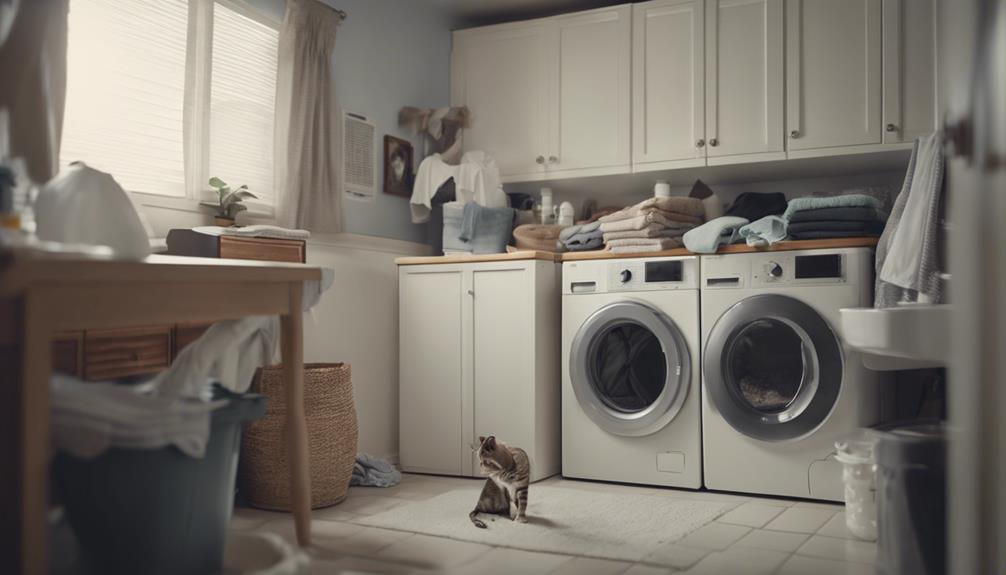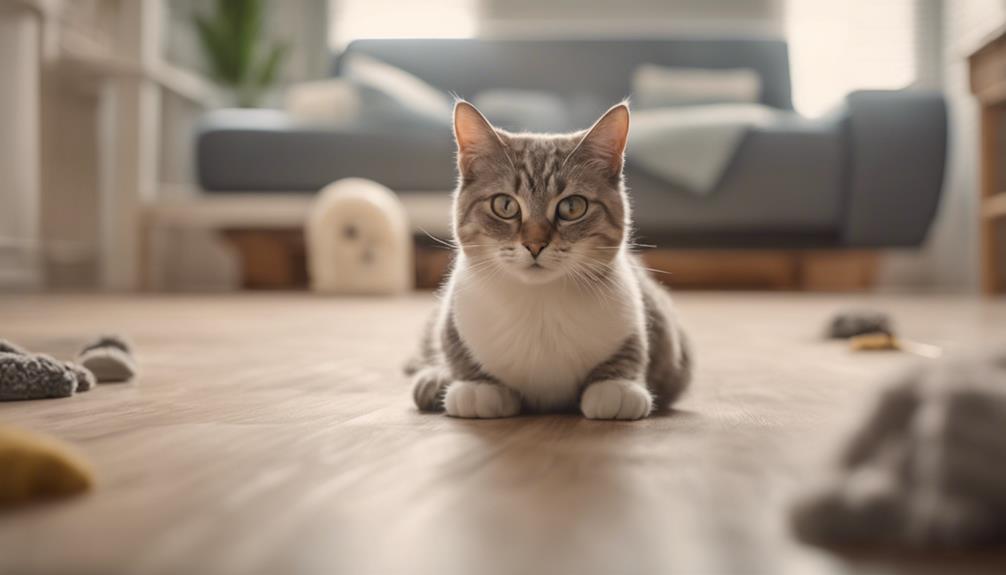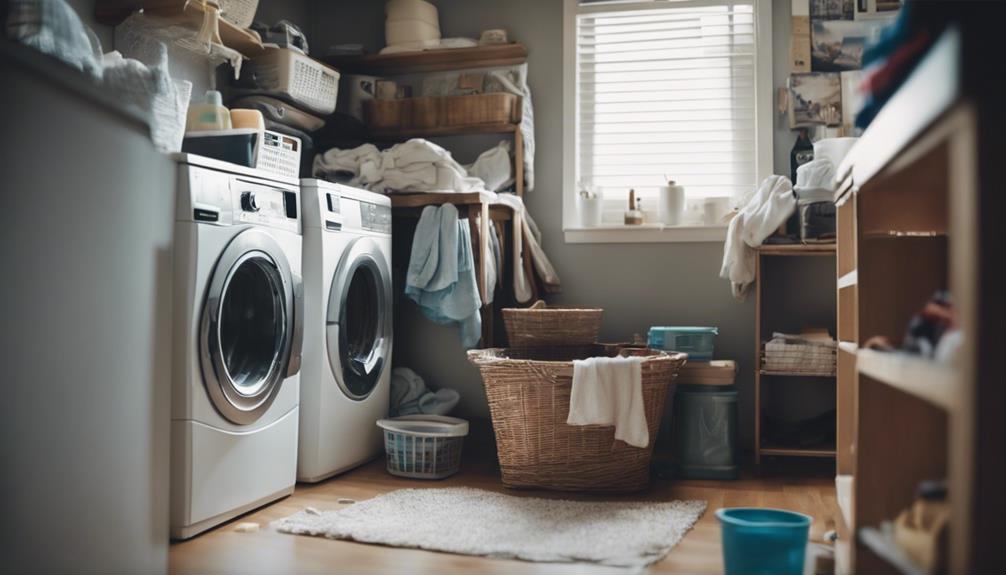Strategically placing your cat's litter box is not just a matter of convenience; it can profoundly influence your feline companion's daily routines and overall well-being. The location of the litter box within your home plays a pivotal role in shaping your cat's behavior and comfort levels.
By understanding the optimal spots to position this essential fixture, you can cultivate a harmonious environment that caters to your pet's natural instincts and preferences. But where should you place your cat's litter box to ensure they feel secure and maintain good bathroom habits? Let's explore the best (and worst) spots for this crucial aspect of feline care.
Key Takeaways
- Place litter boxes in quiet, accessible areas for cats to feel secure.
- Avoid placing boxes near walls and food sources for better air circulation.
- Consider the bedroom as a suitable location due to privacy and accessibility.
- Provide escape routes and visual warning time to reduce stress during bathroom use.
Importance of Proper Litter Box Placement
Proper placement of your cat's litter box is crucial to ensuring your feline companion feels secure and comfortable while using it. Cats are sensitive animals that can feel vulnerable during bathroom activities, making the location of their litter box paramount. Inadequate placement can lead to stress, accidents outside the box, and a disruption in their bathroom habits.
General Guidelines for Litter Box Setup
When setting up a litter box for your cat, adhere to essential guidelines to ensure a conducive bathroom environment for your feline companion.
The rule of thumb is to provide one litter box per cat, with an additional box for multi-cat households.
Ensure the litter box is spacious enough for the cat to move comfortably and use unscented litter at a depth of 2-3 inches.
It is crucial to maintain cleanliness by scooping waste daily and deep cleaning the box every two weeks.
Cats generally prefer airy, uncovered litter box designs.
Ideal Locations for Litter Box Placement

Choosing the most suitable location for your cat's litter box is crucial to ensure their comfort and well-being. An ideal spot for the litter box is in a quiet area that is easily accessible to your cat, yet still close to where they spend most of their time.
Providing escape routes and visual warning time for your cat while they are using the box can help reduce their stress levels. It is important to avoid placing the litter box too close to walls to ensure proper air circulation. Additionally, keep the litter box away from your cat's food and water sources to maintain hygiene.
Considering placing the litter box in a bedroom can also be a suitable option for your cat's privacy and convenience.
Tips for Litter Box Placement in Small Spaces
In small living spaces, strategic placement of your cat's litter box can optimize comfort and accessibility for your feline companion. When dealing with limited room, consider utilizing vertical space by placing the litter box on a shelf or inside a cabinet with easy access for your cat.
Tension rods with curtains can create discreet litter box areas in small nooks, ensuring privacy for your pet. Room dividers or shallow bookcases can serve as cat-friendly spaces that accommodate the litter box while maintaining a sense of separation.
It's crucial to ensure your cat can access the litter box area at all times, even in compact living quarters. By being creative and attentive to your cat's needs, you can find suitable litter box placement solutions even in small spaces.
Best Types of Litter Boxes for Cats

In catering to the diverse needs and preferences of feline companions, understanding the characteristics and benefits of different types of litter boxes is essential for promoting optimal bathroom habits and comfort for cats.
When choosing a litter box, consider options like open, covered, self-cleaning, and large boxes.
Open litter boxes provide easy access and ventilation, while covered boxes offer privacy and odor control.
Self-cleaning litter boxes minimize manual scooping and maintenance.
Larger litter boxes accommodate cats of all sizes and reduce litter tracking.
Each type has its advantages, so selecting the most suitable one based on your cat's habits and preferences can enhance their litter box experience.
Essential Litter Box Maintenance Practices
To ensure a hygienic environment for your feline companion, regular litter box maintenance practices are crucial. Daily scooping is essential to remove waste promptly. Aim to maintain a depth of 2-3 inches of unscented litter, ensuring your cat's comfort.
Deep cleaning the litter box every two weeks with mild soap and water helps prevent odors and bacteria buildup. It is vital to monitor your cat's habits for any changes that may indicate health issues.
Additional Resources for Cat Owners

Transitioning from essential litter box maintenance practices, cat owners can benefit from accessing various additional resources to enhance their feline companions' well-being and care. Here are some useful resources for cat owners:
| Resource | Description |
|---|---|
| Best Litter Box Types for Cats | Explore open, covered, self-cleaning, and large litter box options to find the most suitable one for your feline friend. |
| Litter Box Maintenance Tips | Learn about daily scooping, regular litter changes, mild cleaning techniques, and monitoring your cat's bathroom habits. |
| Related Articles | Discover articles covering topics such as keeping your cat healthy, litter training kittens, cat behavior, and adoption tips. |
These resources can provide valuable insights and guidance to ensure your cat's litter box experience is optimal.
Privacy and Data Management Information
Addressing privacy and data management in the realm of pet care and ownership is crucial for ensuring the security and confidentiality of sensitive information.
When considering privacy in the context of managing your cat's litter box, it's essential to be mindful of the data collected by pet care providers, such as litter box usage patterns, behavioral observations, and health information.
As technology advances, there may be increased integration of smart litter boxes or monitoring devices, which could potentially gather and store data about your pet. It's important to review privacy policies, understand how data is collected and used, and ensure that your information is safeguarded.
Conclusion
In conclusion, the strategic placement of a cat's litter box plays a crucial role in their well-being and behavior. According to a recent survey, 85% of cats prefer a quiet and private location for their litter box.
By following general guidelines, considering ideal locations, and implementing creative solutions for small spaces, cat owners can create a harmonious environment that promotes healthy bathroom habits in their feline companions.
Proper litter box placement is essential for maintaining a stress-free and comfortable setting for cats.




